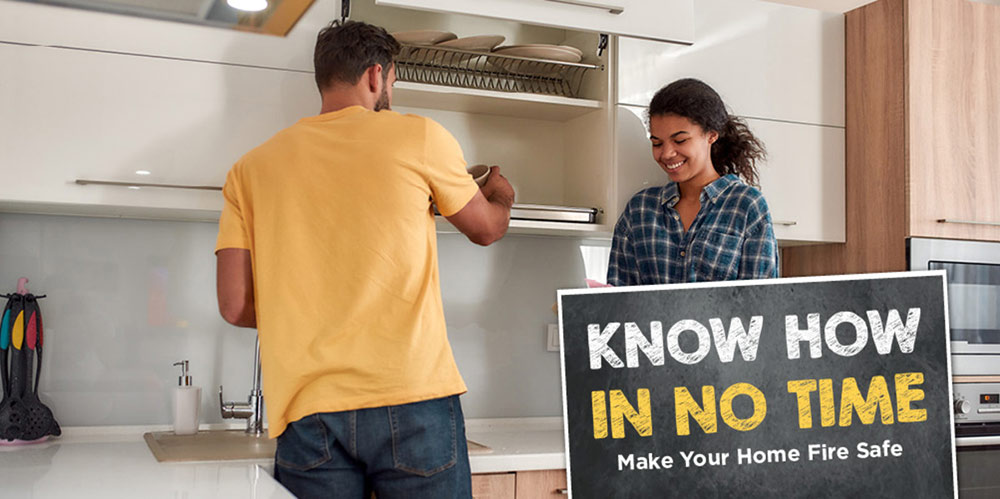
Make Your Home Fire Safe
There are 3 important steps to making your home fire safe:
- The National Fire Protection Association recommends installing US or ETL rated smoke alarms on every level in your home, in every bedroom, and outside of all sleeping areas. Test smoke alarms once a month. Replace the batteries at least once a year. A good rule of thumb is to change the batteries when you change your clocks. Replace any smoke alarm after 10 years. Don’t forget to check your emergency flashlights as well.
- Install a carbon monoxide alarm in a central location on every level of your home. Test monthly and check batteries every time you change the clocks. Most carbon monoxide or smoke alarms come with a bracket to hang from the wall or ceiling using screws and a screwdriver.
- Have an ABC classification fire extinguisher on every level of the home, especially in the kitchen. Check the gauge monthly and replace as needed, or after 12 years. Most importantly, have a fire escape plan and practice it with everyone in the household.
Know before you go! Download our full materials checklist:
Smoke Alarms:
Smoke alarms should be placed on every level of the home. They should also be placed in every bedroom and outside of each sleeping area. Smoke alarms should be installed at least 10 feet away from the kitchen or stove to avoid cooking nuisance alarms. Smoke alarms should be installed either on the ceiling or high up on a wall, no more than 10 inches from the top of the wall. Smoke alarms should be cleaned and maintained so that dust, pollen, pet dander, etc. does not affect the alarm's sensor.
Carbon Monoxide Alarms:
Carbon monoxide (CO) alarms, like smoke alarms, should be placed on each level of the home. They should also be placed in each bedroom. CO alarms can be placed anywhere in the room, they do NOT need to be close to the ground or the ceiling. Carbon monoxide distributes evenly through the air, so an alarm will detect it no matter what height it is installed at. Carbon monoxide alarms should be replaced every 5 to 7 years.
Fire Extinguishers:
There should be at least one fire extinguisher on every level of the home. It is important to have a fire extinguisher in the kitchen. However, you must make sure you have the right grade of fire extinguisher. It would be smart to also have an extinguisher in the garage. Like the kitchen extinguisher, make sure you have the correct grade of fire extinguisher for a possible fire that could start in the garage.
- P.A.S.S. Technique
- Pull the pin
- Aim at the base of the fire
- Squeeze the lever
- Sweep from side to side
Escape Ladders:
Escape ladders are not required by law, but they could be extremely useful in case of a house fire. You should have at least one if your home has a second or third story. Each room in your home should have two escape routes, in most bedrooms, the window is an escape route, therefore it would be smart to keep an escape ladder in a closet or easily accessible location in the bedroom. In the event of a home safety emergency, every second counts. According to the National Fire Protection Association, you may have less than two minutes to escape after your smoke alarms sound. That's why it's important to be prepared by planning and practicing an escape route with the entire family. By planning, practicing and repeating your emergency escape plan, you can help ensure a safe escape.
Make an Escape Plan:
- Walkthrough your home with your family and identify multiple exits out of each room in the house. If windows or doors are blocked, clear them so they can be easily accessed and opened.
- For two-story houses, consider equipping bedrooms with escape ladders to provide additional, safe exits.
- Dedicate someone to assists small children or infants out of the home.
- Assign a meeting spot outside that is a safe distance away from your house like the mailbox, tree or neighbor’s house.
- Ensure your street address is clearly visible on your home or mailbox for first responders. If you have children, teach them how to call 9-1-1 once outside at your meeting spot and help them memorize your home address.




